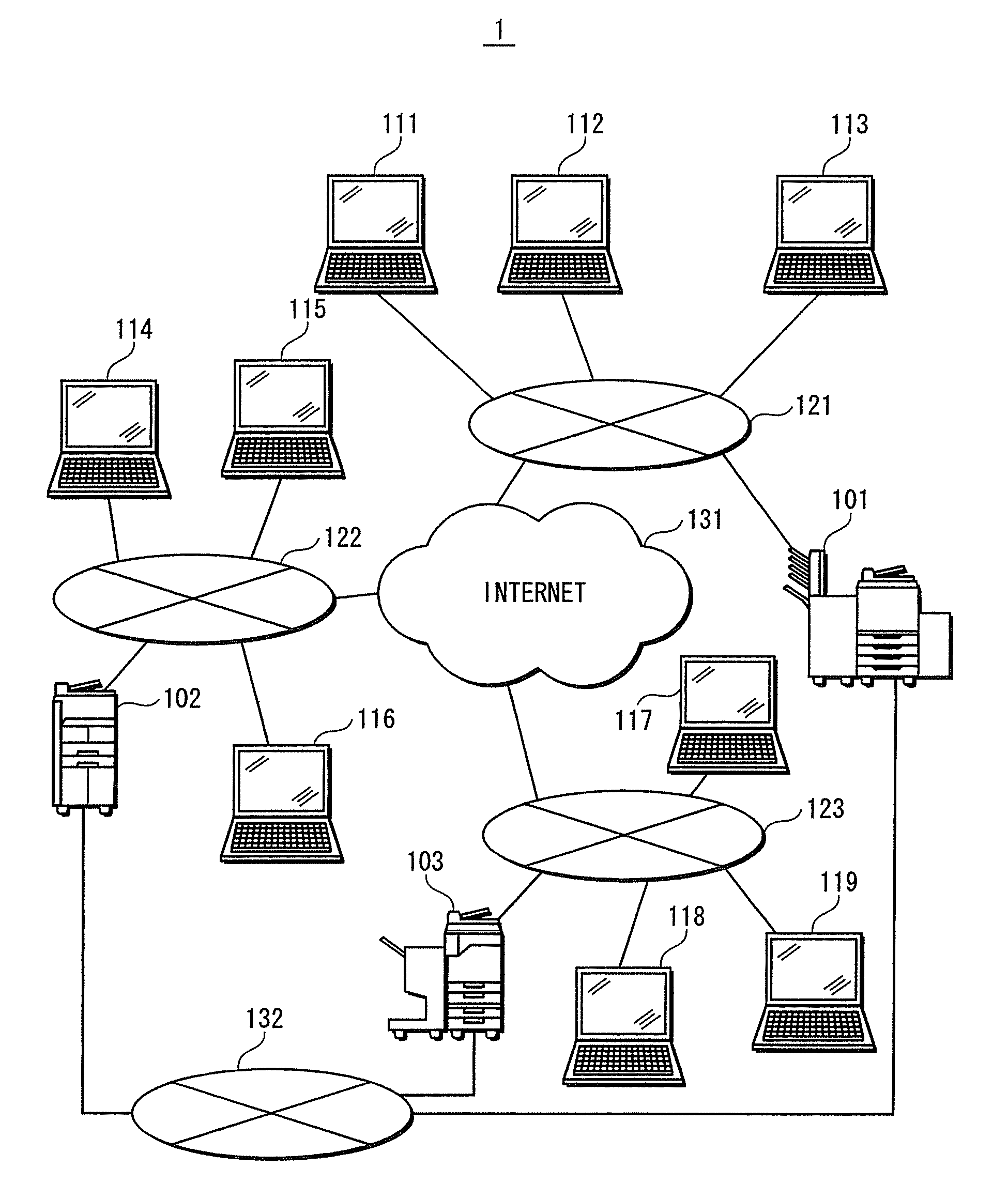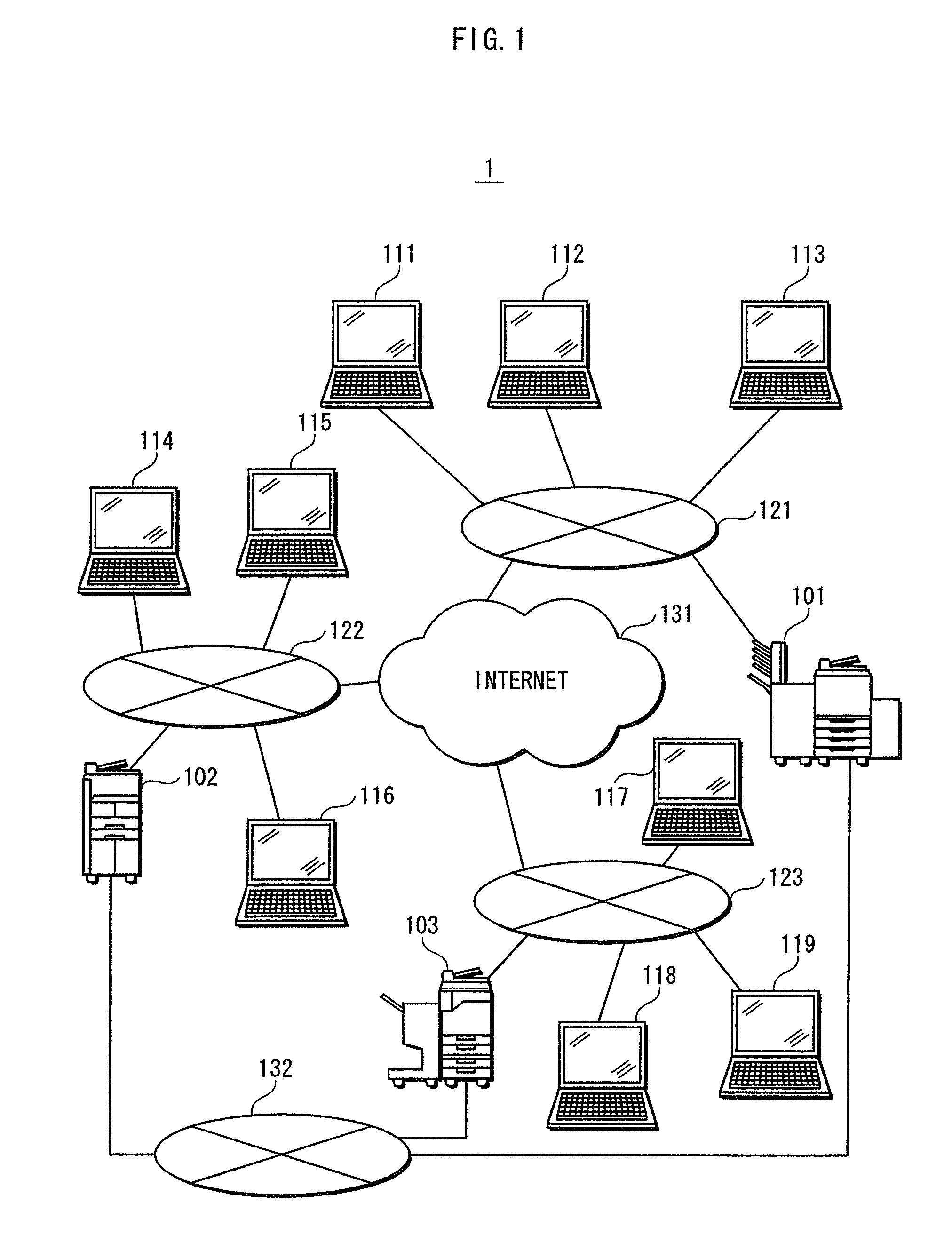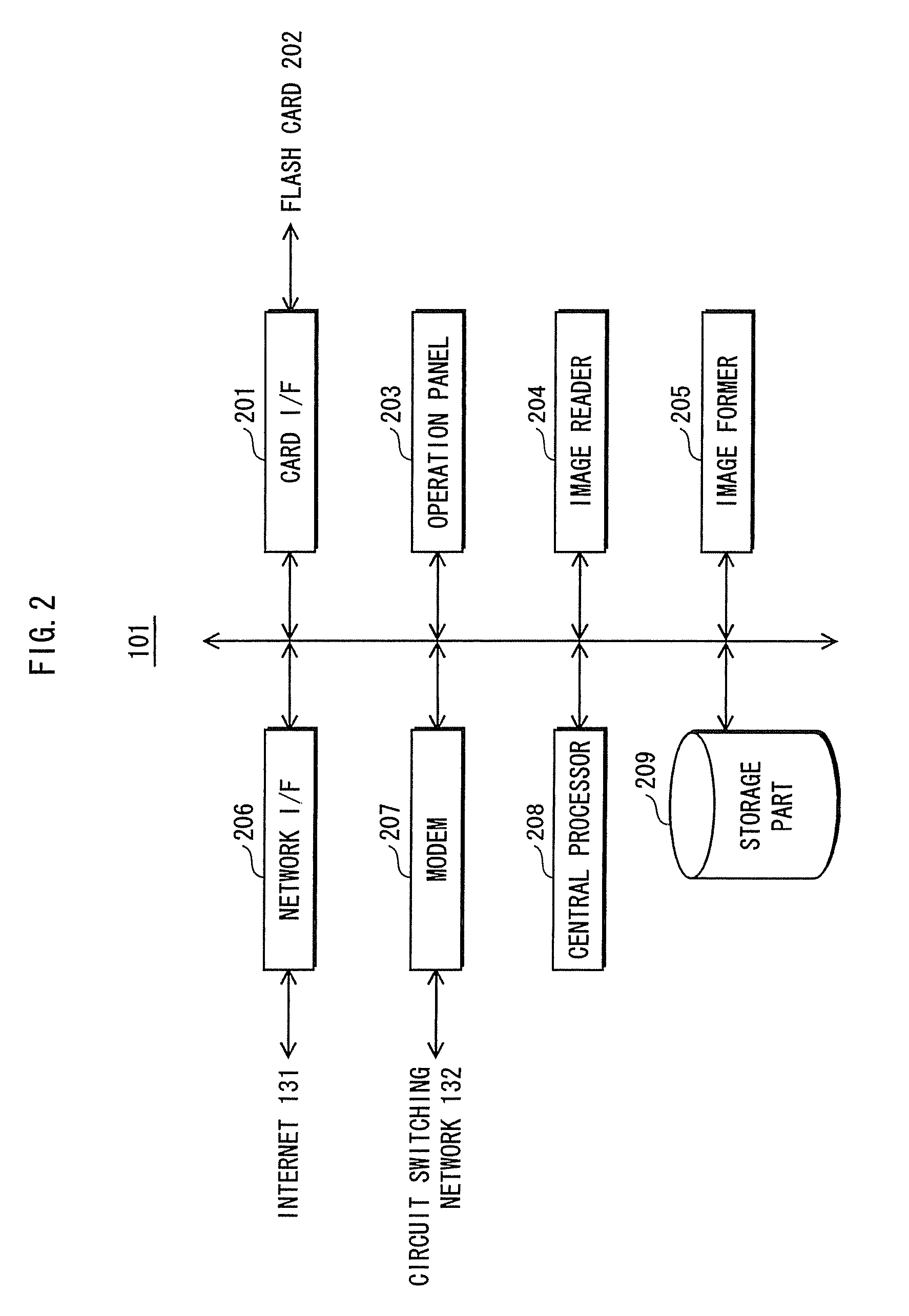Image transmission apparatus
a transmission apparatus and image technology, applied in the field of image transmission apparatus, can solve the problems of image data being transmitted to the wrong destination, inconvenient and even extremely tedious for users, and many destinations that are inconvenient and even extremely tedious for users, and achieve the effect of high level of convenien
- Summary
- Abstract
- Description
- Claims
- Application Information
AI Technical Summary
Benefits of technology
Problems solved by technology
Method used
Image
Examples
first embodiment
1. First Embodiment
[0043]The image communication system relating to the first embodiment of the present invention includes a plurality of MFPs. A feature of the image communication system is that each MFP includes a destination user list set individually for the MFP by an administrator, and a plurality of address books, each of which is set by a different individual user of the MFP, and when image data is to be transmitted, the destination is automatically set based on the user list and the address book of the user sending the image data.
(1) Structure of the Image Communication System
[0044]First, a description is given of the structure of the image communication system relating to the present embodiment.
[0045]As shown in FIG. 1, an image communication system 1 is composed of MFPs 101 to 103, personal computers (hereinafter called “PC(s)”) 111 to 119, local area networks (hereinafter called “LAN(s)”) 121 to 123, the Internet 131, and a circuit switching network 132.
[0046]The MFP 101 ...
second embodiment
2. Second Embodiment
[0099]Next a description is given of an image communication system relating to a second embodiment of the present invention. While the image communication system of the second embodiment has basically the same structure as the image communication system of the first embodiment, it differs in that the transmission-side MFP records transmission history of image data.
[0100]The following description focuses principally on the aspects that differ from the first embodiment.
(1) Communication Sequence
[0101]First a description is given of the communication sequence in the image communication system of the present embodiment. Note that in the same way as the first embodiment, the following description is of an example of the transmission-side MFP being the MFP 103, the reception-side MFP being the MFP 101, and the destination user being person A (PC 111).
[0102]As shown in FIG. 11, upon receiving a transmission instruction to transmit image data to person A, the MFP 103 tra...
third embodiment
3. Third Embodiment
[0115]Next a description is given of an image communication system relating to the third embodiment. While the image transmission system of the present embodiment has basically the same structure as the image transmission system of the first embodiment, it differs in that it receives, as the destination of the image data, a designation of a group that includes a plurality of destinations. The following description focuses principally on the aspects that differ from the first embodiment.
[0116]The communication sequence in the image communication system of the present embodiment is the same as the communication sequence in the image communication system of the first embodiment, and therefore a description thereof is omitted. A description of the operations of the reception-side MFP is omitted for the same reason, and the following describes only the operations of the transmission-side MFP.
[0117]As shown in FIG. 14, upon receiving a read instruction to read image dat...
PUM
 Login to View More
Login to View More Abstract
Description
Claims
Application Information
 Login to View More
Login to View More - R&D
- Intellectual Property
- Life Sciences
- Materials
- Tech Scout
- Unparalleled Data Quality
- Higher Quality Content
- 60% Fewer Hallucinations
Browse by: Latest US Patents, China's latest patents, Technical Efficacy Thesaurus, Application Domain, Technology Topic, Popular Technical Reports.
© 2025 PatSnap. All rights reserved.Legal|Privacy policy|Modern Slavery Act Transparency Statement|Sitemap|About US| Contact US: help@patsnap.com



